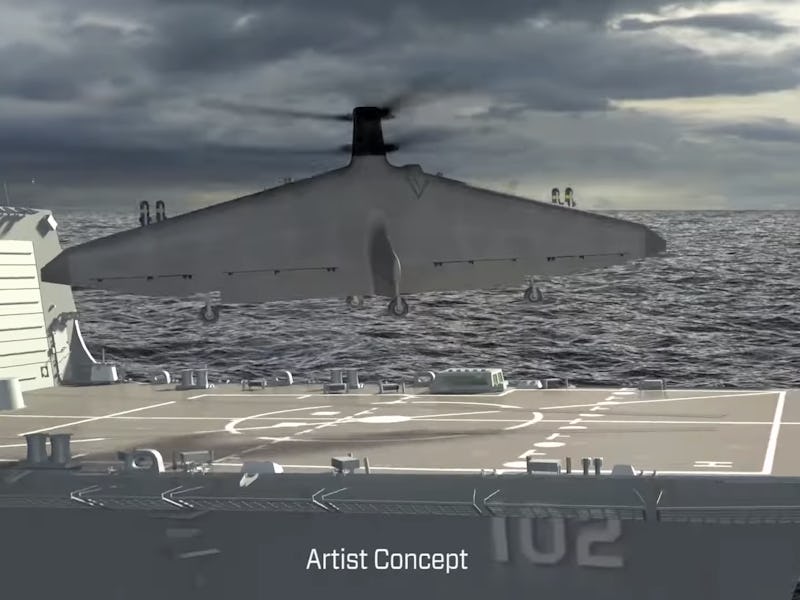DARPA's New Tern Drone is Weird, Deadly Attack Helicopter-Plane

DARPA has never been afraid to incorporate some weird-ass designs into its trials for new military aircraft, and it’s new drone concept, Tern, is no different.
Northrop Grumman, the Tern’s maker, published a concept video today outlining some of the craft’s features. The Tern is a vertical take off and landing (VTOL) aircraft, which means it doesn’t need a traditional runway to get in the air. This makes it a huge asset for the U.S. Navy, whose Office of Naval Research team contributed to the project. The Navy places a premium on VTOL designs, especially as the military moves toward a high-tech, stealthy, rapid-deployment model. Essentially, the massive lumbering aircraft carriers that have been the bulwark of U.S. air and sea power since WWII are all well and good, but the future of small-scale, shifting conflicts like those in the Middle East and Africa will demand smaller forces with quicker response times. With VTOL craft, boats like destroyers and smaller cruisers that usually only have space for helicopters could carry fixed-wing aircraft with a much longer range and larger payload.
The only downside is that some of those aircraft, like the Tern, basically look like a cross between a paper airplane and a whirlygig. But it’s highly unlikely that anyone is going to look up and say “hey, that drone looks dorky as hell” when it’s carrying up to 1,000 pounds of explosives.
Come on man, the little wheels at the bottom make it look like a shopping cart with wings.
The Tern is a medium-altitude, long endurance drone. It’s “highly autonomous,” meaning that DARPA probably intends for it to take advantage of A.I.-powered developments to make it even smarter in the skies.
Northrop Grumman says the Tern will be able to launch from over 100 U.S. Navy vessels currently in service, extending it’s reach to almost every part of the globe, except for interior bits of Asia and Africa that are out of range of the coasts. It can work at ranges “greater than 600 nautical miles,” (about 690 land-miles) according to Northrop Grumman’s video. That’s a bit shorter than the enormous Reaper drone, which has a range of 1,150 miles, but again, is a fixed-wing horizontal take off craft that needs a huge amount of space to take off.
DARPA, ONS, and Northrop Grumman plan to test out a full-scale prototype at sea in late 2018.